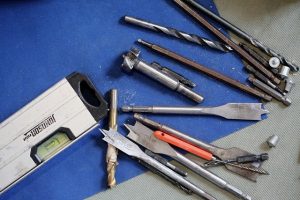
Do you know the difference between a traditional drill bit and a Jobbers bit? While they are both used in conjunction with a power drill to create holes in objects and materials, they aren’t the same. A Jobbers bit is a specialized drill bit that features a different design. Here’s everything you need to know about Jobbers bits and how they work.
Overview of Jobbers Bits
Jobbers bits are specialized drill bits that are used to create holes. Like most drill bits, they feature a helical design consisting of grooves known as “flutes.” When pressed against an object, a spinning Jobbers bit will create a hole via these flutes. The flutes will essentially scoop out material as the Jobbers bit enters the object and spins.
So, what distinguishes a Jobber bit from a traditional drill bit? Jobber bits are characterized by their length and flute design. They are longer than traditional drill bits, and they have wider flutes than their traditional counterparts.
You can find Jobbers bits in a variety of materials, some of which include the following:
- Stainless steel
- High-speed steel (HSS)
- High-carbon steel
- Cobalt
- Tungsten carbide
Advantages of Jobbers Bits
Because they are longer than traditional drill bits, Jobbers bits are ideal for creating large holes in objects. If you only need to create a shallow hole, a traditional drill bit will likely suffice. For deep holes in a given object, on the other hand, you may need a specialized drill bit like a Jobbers bit. Jobbers bits are long enough to create deep holes that extend farther than traditional drill bits.
Another advantage of Jobbers bits is versatility. They aren’t limited to specific drilling applications. Whether you’re drilling a hole in wood, polymer or metal, you can’t go wrong with a Jobbers bit. The long length and wide flutes allow Jobbers bits to create holes in most materials.
Disadvantages of Jobbers Bits
Jobbers bits are more likely to break during use than traditional drill bits. This isn’t because they are made of cheap materials or poorly made. Rather, the long length of Jobbers bits makes them susceptible to breakage. If you accidentally press a Jobbers bit at an angle — as opposed to keeping it perpendicular to the object — you may inadvertently break it.
Jobbers bits often cost more than traditional drill bits. They are longer, and in many cases, thicker than traditional drill bits. As a result, they cost more to produce.



